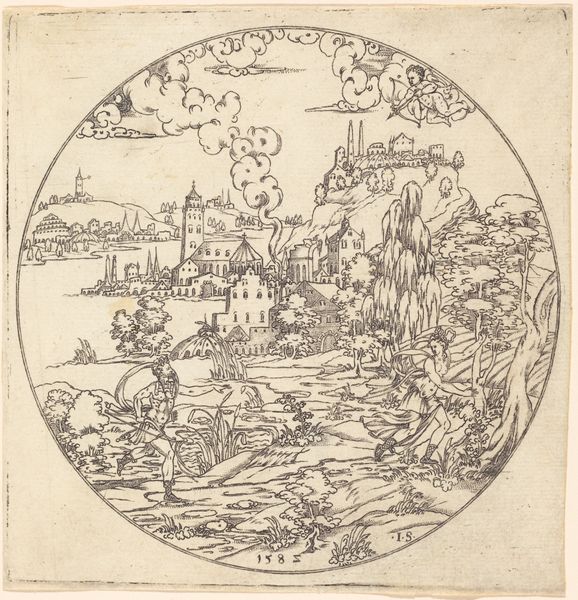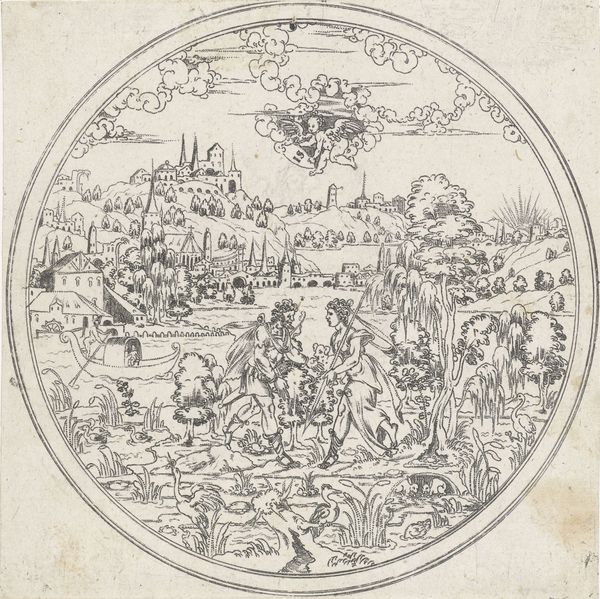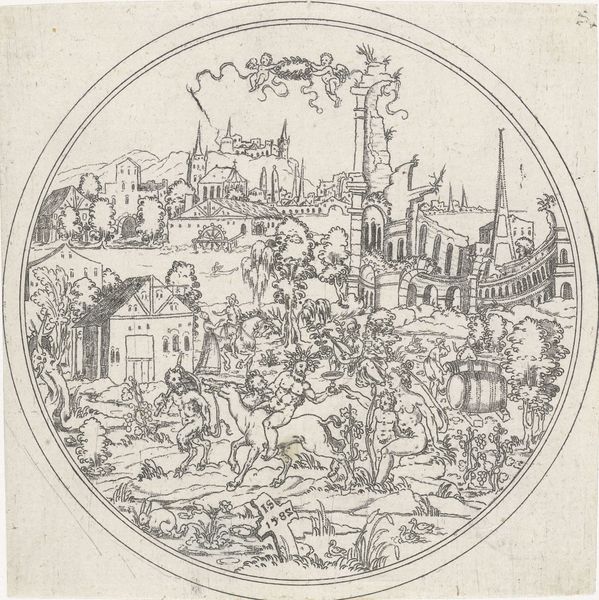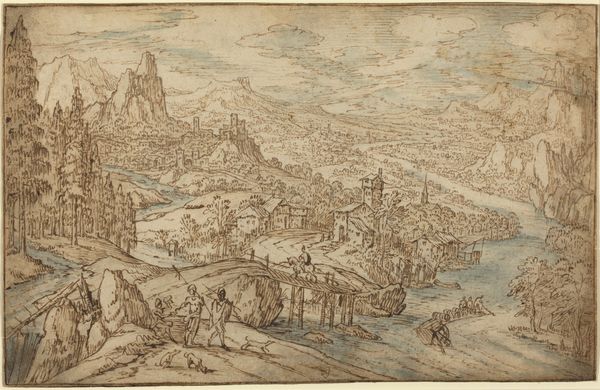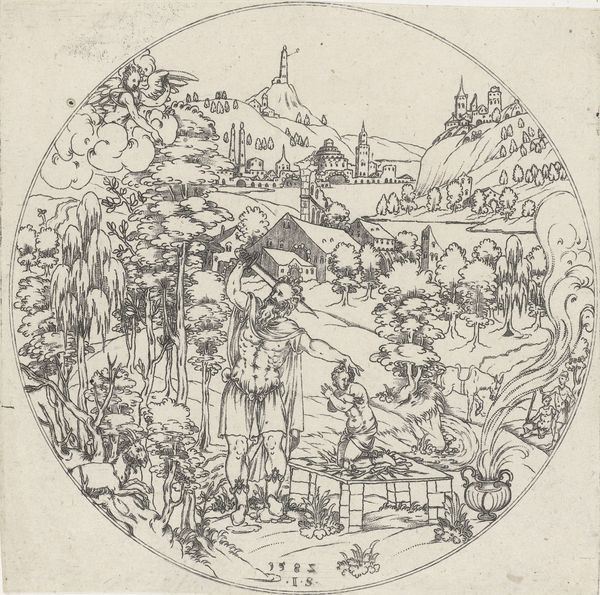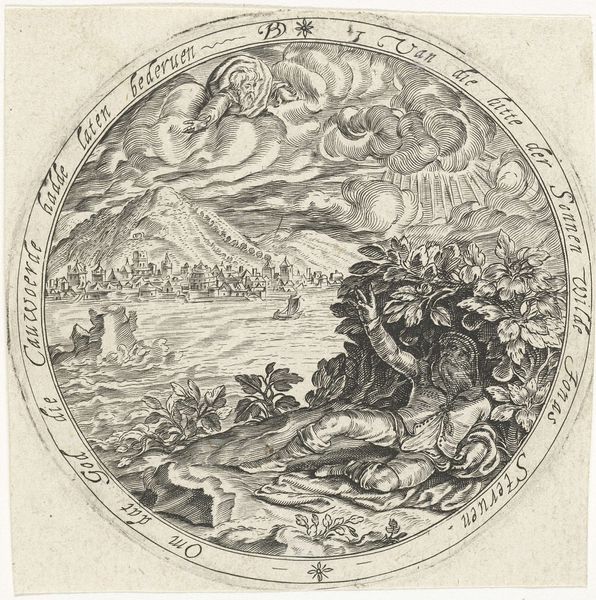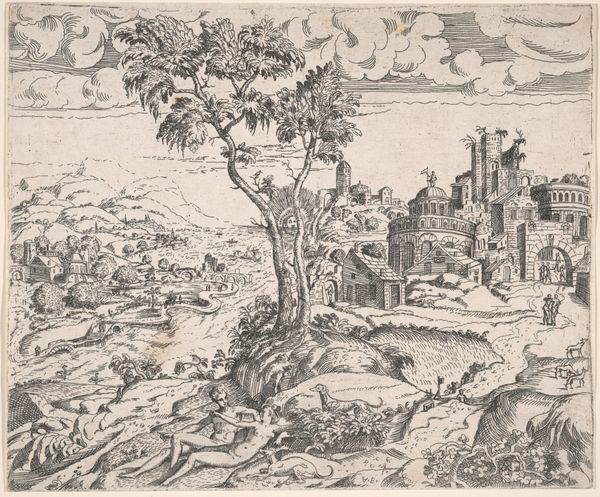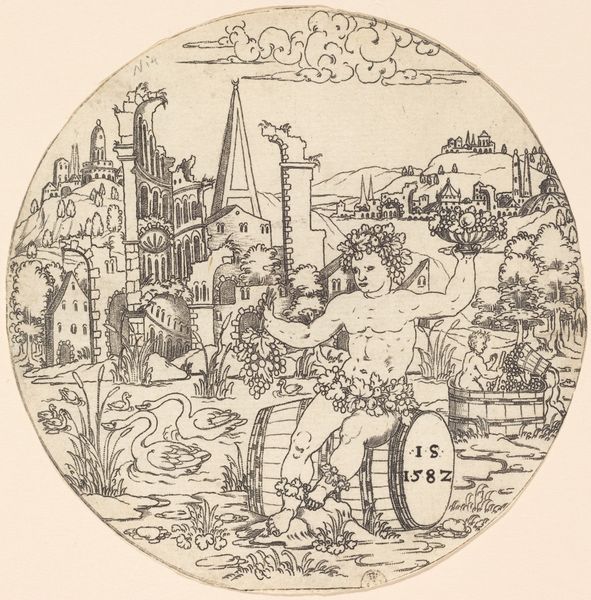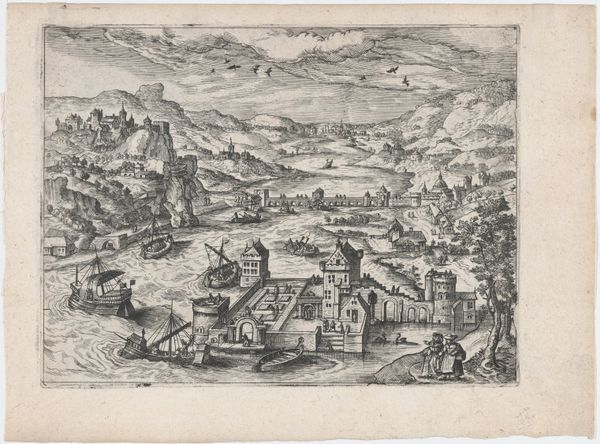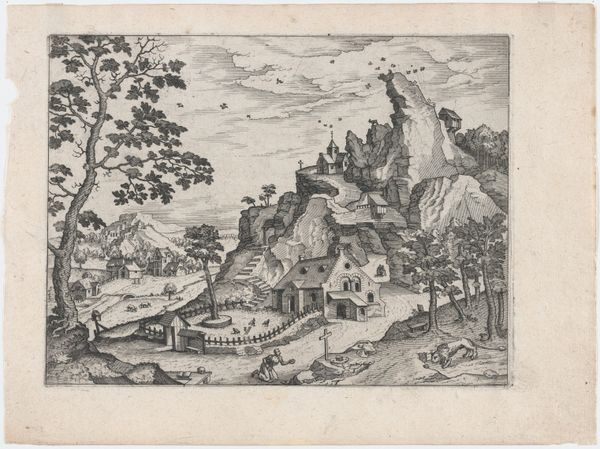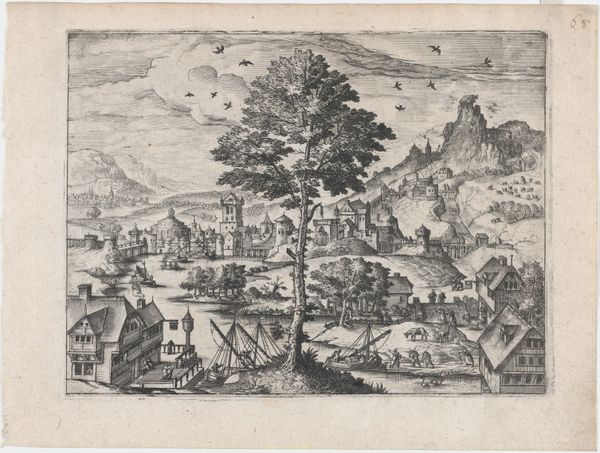
print, etching, engraving
#
allegory
#
pen drawing
# print
#
etching
#
landscape
#
figuration
#
line
#
italian-renaissance
#
engraving
Dimensions: sheet: 14.7 × 15 cm (5 13/16 × 5 7/8 in.) plate: 14 × 14.5 cm (5 1/2 × 5 11/16 in.)
Copyright: National Gallery of Art: CC0 1.0
Curator: Allow me to introduce you to Jonas Silber's "Apollo and Daphne," an engraving dating back to 1582, rendered with delicate lines in pen and etching techniques. Editor: Whoa, there's a lot going on in that circular frame. My immediate impression is that this feels like a fever dream—the figures are almost bursting from this meticulously etched landscape. The sense of chase is palpable. Curator: Indeed. The dynamism arises from the careful orchestration of space. Note the relative positioning of Apollo and Daphne in relation to one another in the foreground of the landscape; it echoes Ovid's narrative quite intently. Also, note how the figures command our focus. This then guides the eye into the detailed background. Editor: Right, and the lines are incredible. There's an incredible tension there, both visual and emotional. The precision emphasizes the futility of Apollo's pursuit—or perhaps the inevitability of Daphne’s transformation? The crisp lines make it all feel so deliberate. Curator: Quite right. Silber has utilized the technique of line engraving here. The artist skillfully portrays texture and depth, thereby transforming a two-dimensional surface into an immersive vista, charged with latent symbolic meaning. Note, for example, the architectural components integrated seamlessly into the landscape: these are all intended to contribute to the allegory. Editor: And is it just me, or is there something delightfully subversive about portraying this intensely private moment of transformation— Daphne merging into bark, mid-scream— against the backdrop of such a busy civilization? There's the sense of witnessing something timelessly tragic play out amid an all-too-fickle humanity. The erotic charge here, though subtle, heightens it, I feel. Curator: Subversion and erotic charge may be overstatements. Rather, I would consider the visual dynamics to underscore an acute awareness of allegorical intention in the late Renaissance imagination. By embedding his interpretation of the story in such dense and carefully considered environs, Silber provides an implicit framework for interpreting the human drama playing out in the foreground. Editor: Perhaps, though I think Silber successfully provokes one to meditate on that delicate balance between public life and private grief, which is ultimately the allegory's point. Curator: A valuable observation, indeed. I now recognize there's so much to digest, both within and without its framing principles. Editor: Absolutely. In this dance between detailed execution and layered allegory, there's so much for the eyes, and heart, to unpack.
Comments
No comments
Be the first to comment and join the conversation on the ultimate creative platform.
